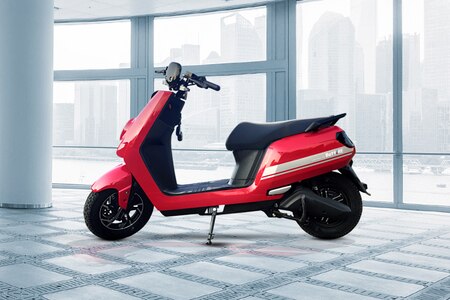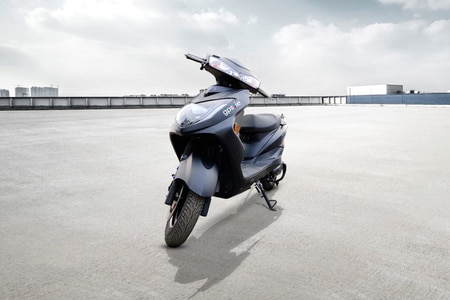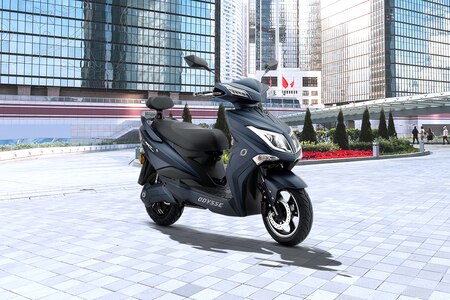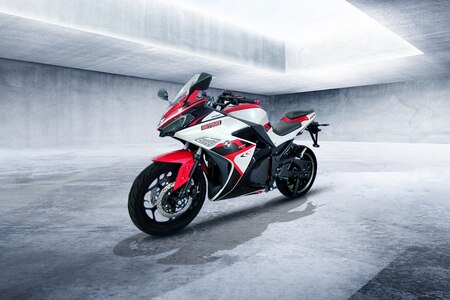Cheap microcars may go extinct as Japan pushes in electric vehicles


Japan’s kei cars, known for their affordability and small engines, face a potentially existential threat as the country leans on automakers to go electric as part of its net-zero emissions goal.
Kei means “light" in Japanese, and the category makes up about a third of new domestic automobile sales. They’re a popular means of transportation outside of major cities, used by farmers and families that need multiple vehicles to get around. Cheap to buy and own, keis are mainly manufactured for the home market, with engines limited by law to 660 cubic centimeters (40 cubic inches).
Also check these Bikes
Also Read : New Zealand may ban import of petrol cars by 2032
Japanese Prime Minister Yoshihide Suga pledged last year to decarbonize Japan by 2050, with plans to ban the sale of new gasoline-only vehicles by the mid-2030s. That’s created a dilemma for Honda Motor Co., Nissan Motor Co. and other makers of compact cars, with the added cost of technology making them less affordable for buyers. Electrification can add 1 million to 2 million yen ($9,600-$19,200) to the price tag of a kei, potentially doubling its price, according to Tokyo Tokai Research.
“Affordability and convenience are the lifeblood of compact cars," said Hitoshi Horii, the head of the Japan Mini Vehicles Association. “These cars are important mobility that work as infrastructure and something that replaces public transportation."
Also Read : Joe Biden's buy-America dream relies on buying EVs that no one makes)
Kei cars are common in rural areas, where public transport systems are sparse. They’re well suited for Japan’s narrow roads, of which 85% are only wide enough for two kei cars to pass. That figure was cited by Akio Toyoda, chairman of the Japan Automobile Manufacturers Association and Toyota Motor Corp.’s chief executive, in December.
“The kei is Japan’s national car," Toyoda said. Daihatsu Motor Co., Toyota’s unit that makes keis, hasn’t shifted toward electrification as much and achieving carbon neutral with the current energy mix is crucial, he said. “People maybe able to live in cities without keis, but once you’re in a rural region, these cars are a necessity."
Decades of economic stagnation in Japan has spurred consumers to opt for kei cars. About 1.7 million units were sold last year in total, suppressed by the pandemic, while sales have been steady in the past years, according to the Japan Mini Vehicles Association.
With the pandemic weighing on the economy, and Japan’s unemployment rate ticking back up to almost 3%, consumer sentiment is falling. A price hike on kei cars would likely put the heaviest burden on people with lower incomes, especially the elderly and women, many of whom work part time and earn less than men on average. Some 40% of kei drivers are 60 or older, and the employment rate of women in the same age group who own keis is double compared with those who don’t, according to the association.
“Kei cars would be meaningless if their prices go up," said Nozomi Hiramatsu, who started her own farm in northeastern Japan four years ago. “The car and its tax are cheap. A kei fits my lifestyle."
Price increases, in the form of higher taxes, have faced push-back in the past. When the government began to discuss a tax hike for keis in the early-2010s, Osamu Suzuki, chairman of Suzuki Motor Corp., said it was “picking on the weak," according to reporting by the Nikkei newspaper. Japan eventually raised the tax for newly sold keis in 2015.
Toyota and Honda could use their hybrid technology for keis, but they bear the risk of being culled in case battery prices go down, according to Takeshi Miyao, an analyst at Carnorama. Prices for electric-vehicle battery packs fell 15% from 2019 to 2020, whereas plug-in hybrid packs only fell 5%, according to BloombergNEF. Hybrid pack prices didn’t change significantly.
The worst scenario for Japanese kei makers is that affordable electric cars from China will enter the market and lure kei customers, Miyao said. SAIC-GM-Wuling Automobile Co.’s four-seater hatchback Mini EV has become a best-seller in China and is one of the cheapest on the market, costing less than $5,000.
“The keis are likely to feel maximum impact from the government’s target of ending sales of gasoline cars by 2035," Miyao said. “They will be swallowed by the wave of electrification sooner or later."








 3.1 kWh
3.1 kWh 60 km
60 km














